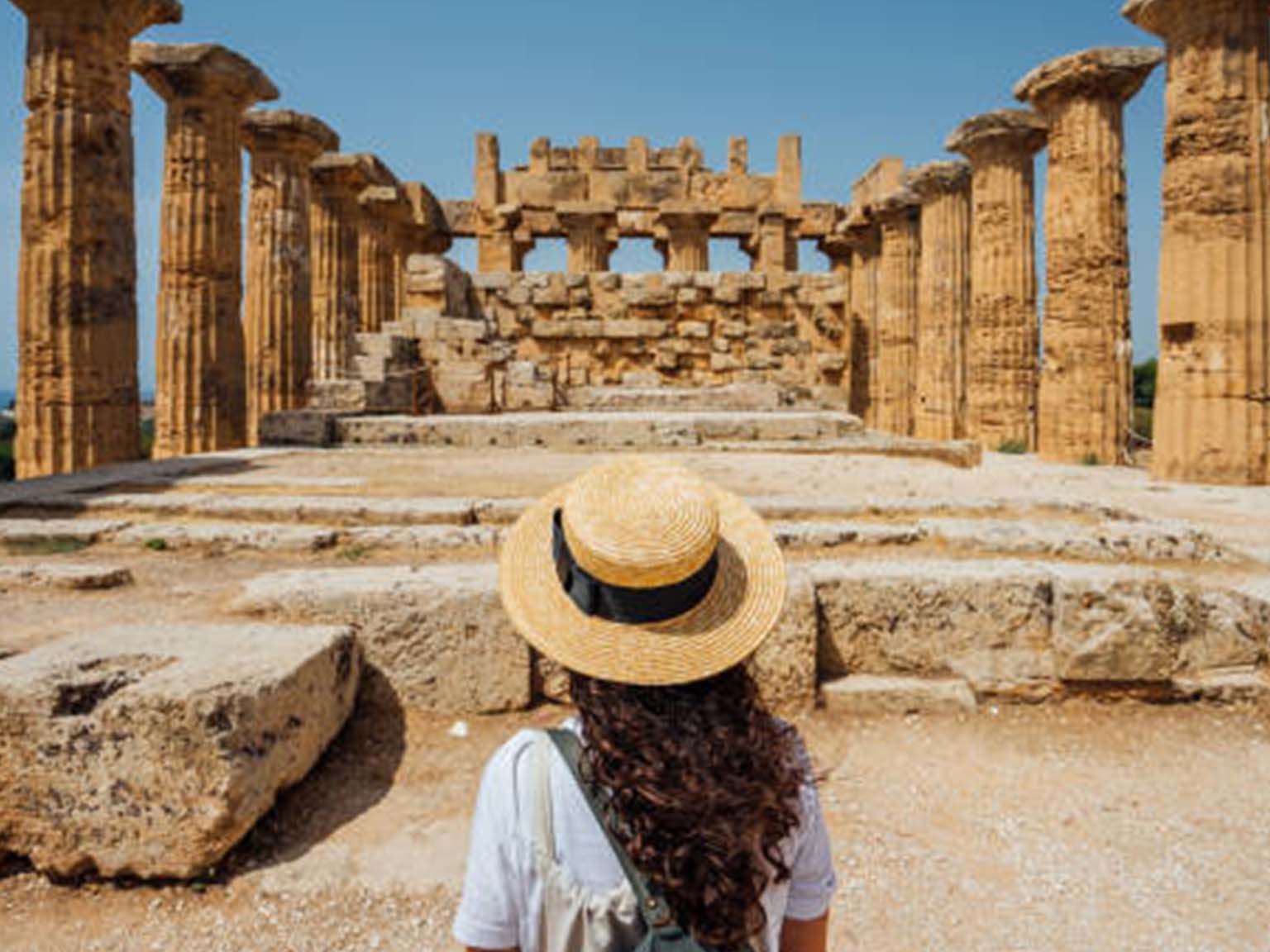
 Umberto Mucci
Umberto Mucci
Italian report: Cultural tourism, Italy's great treasure. A heritage worth 11 billion
- WTI Magazine #176 Jun 23, 2024
-

 Umberto Mucci
Umberto Mucci
Italy is the second tourist destination in Europe and the fifth in the world in terms of international arrivals. Attracting travelers from the continent and the entire planet to the Belpaese like a magnet is our rich cultural heritage, followed by natural beauty and events, whether sporting, recreational or religious, but food and wine, without neglecting sectors such as weddings and shopping, also play a preponderant role in a tourist appeal that is constantly growing, especially in the luxury sector.
Tourism, which already accounts for 13 % of GDP, thus still has a lot of potential, especially among those who are ready to develop more and more digital services, such as Italy's 16 smart cities that are already at the top of the ranking of the integrated services sector.
Tourists, in short, like to find all the offers on their smartphones and choose with a click. this is what emerges from the report 'The business of tourism in Italy. Analysis and prospects by sector', edited by Valerio Mancini, director of Rome Business School's Center for Disclosure Research.
Fab four regions
In 2023, Italy was confirmed as Europe's second-largest destination in terms of overnight stays (Eurostat data, 2024) behind Germany with +3.5 % overnight stays compared to 2022, and fifth in the world in terms of international tourist arrivals (Unwto, the World Tourism Organization, a specialized agency of the United Nations). Lombardy, Lazio, Veneto and Tuscany are the main destinations for international tourism, both in terms of arrivals and overnight stays. Tourism spending from abroad in Italy reached a total of 51.6 billion euros in 2023. The tourism sector now accounts for about 13 % of Italy's GDP, the Gross Domestic Product on which a country's wealth is measured (latest Istat data 2024). Italy manages to attract millions of people every year, who dream of discovering art cities, local traditions, gastronomy, and increasingly fuel shopping tourism, luxury travel and wedding tourism. Thus, the fab four regions are Lombardy, Lazio, Veneto, and Tuscany.
The richness of Italy's cultural heritage is what mainly attracts tourists visiting Italy (24 %), followed by the natural beauty (20 %) of our Peninsula. Growing steadily, according to the Enit-Unioncamere/Isnart study (February 2024), is the motivation related to events in the area, 'attractors' of more than 6.5 % of tourists (55 million presences between Italians and foreigners), which is also characterized by an above-average propensity to purchases (93 euros the expenses made in the territory, excluding travel and accommodation, compared to an average of 65 euros, for estimated consumption of 7.8 billion euros, or 9.3 % of the total). Cultural interest in Italy will generate revenues of $12 billion (11 billion euros) by 2028, marking a +160% increase over 2021, with an annual growth of 14.4%. Gastronomy also plays an important role: food and wine interests for typical products and Made in Italy agribusiness alone move 1 in 4 tourists (22.3% of Italian tourists and 29.9% of foreigners). Thus, the four main reasons why tourists come to Italy are: cultural heritage; natural beauty; events; and food and wine.
Rome, 5 top attractions
The regions most affected by international spending on cultural vacation were Lazio with about 5 billion euros, Veneto with nearly 2.9 billion euros, Tuscany with 2.7 billion euros, Lombardy with over 1.2 billion and Campania with about 890 million euros. These 5 regions together accounted for 81.3 % of the total cultural vacation spending by foreigners. Rome stands out as Italy's top tourist destination with 27 million visitors in 2023. According to the 2024 report 'Cultural Tourism in Italy' by The Data Appeal Company, Rome records the highest Sentiment Score of cultural attractions of over 93/100 compared to the city's Sentiment Score of 86.7/100. It also dominates the ranking of Italy's most valued attractions in 2023, with 5 attractions in the top 10, led with much difference by the Colosseum Archaeological Park with more than 7.56 million visitors.
Sports tourism in Trentino
Travelers seeking sports activities are also on the rise, and the Cortina 2025 Winter Olympics will undoubtedly bring in a lot of revenue. Currently, the regions most interested in sports tourism are those in the Northeast, where 46.6 % of spending (48 million euros) is concentrated, with Trentino-Alto Adige leading the way (28 million euros). In the municipalities of Milan, Cortina, Bormio and Livigno, the business of the sectors most directly involved with the 2026 Winter Olympics will be 14 billion euros, according to estimates by the Milan, Monza Brianza and Lodi Chamber of Commerce. However, there is also no shortage of "tourist traps," according to another type of research.
Luxury and wellness
There is no shortage of the impact of luxury travel, which also includes wellness and retreat travelers, accounting for 3 % of GDP, or half of the tourism sector. In fact, along the Peninsula, accommodations above 4 stars account for nearly 22 % of total hotel establishments, confirming a steady trend in the hospitality world as well: between the early 1980s and 2023, luxury hotel supply increased by 191 % and is expected to increase by 12 % by 2033. Globally, according to the 'Wellness Tourism Market Outlook 2023-2033,' the global wellness tourism market is expected to reach $2.3 trillion by the end of 2033.
Wedding tourism in Tuscany
A steadily growing phenomenon within the Italian tourism offer is wedding tourism, which is becoming a flagship for the country. In 2023 alone, it recorded a turnover of 599 million euros, about 11 % higher than the levels estimated in 2019. Tuscany leads the charts, with 21 % of foreign couples choosing its scenic and artistic beauty, followed by Lombardy and Campania. Puglia is growing strongly, and the whole supply chain is networking to create a quality product that can attract more and more couples. The big challenge for Italy will be to enhance all the other destinations that are not only luxury and also to make known the areas that are less inflated by mass tourism.
Green tourism in Abruzzo
Among tourists, millennials (28-44 years old) account for 41.1 % of the total: high school graduates and college graduates, employed and with a medium-high economic status, with a good propensity to spend and looking for quality experiences, knowing and "tasting" the territories in their different excellences. As for the type of tourism by region, Abruzzo is the main destination for green tourism, Lazio for business travel, Emilia-Romagna for sports tourism, and Trentino-Alto Adige and Campania for bicycle tourism.
Italy, the 16 Smart Cities
The ICityRate 2023 ranking ranks Bergamo, Florence, Milan and Modena as Italy's 'leading innovation' smart cities. These four 'leading' cities are followed by Bologna, Genoa, Turin, Trento, Venice (present twice in the top ten) and then Cagliari, Cremona, Padua, Rome Capital, Monza, Parma and Vicenza. Together, they make up the group of 16 'highly digital' cities, with scores above 65/100 in the three ratings. According to the report, technology is key to improving tourism offerings, and smart cities can be the ideal environment for combining digital and tourism.
The tourist of the future
The report highlights new types of tourists on the rise: open air seekers, travelers looking for authentic, immersive experiences in nature; active challengers, enthusiasts of sports and extreme activities; gourmands, who appreciate the authenticity' of each dish and the connection to local food culture; and historians, lovers of art and culture who seek not just places, but deep, immersive cultural experiences. 79% of Millennials and Gen-Z aspire to experience a typical day in local life, while 68% are excited to discover lesser-known places before they become popular.